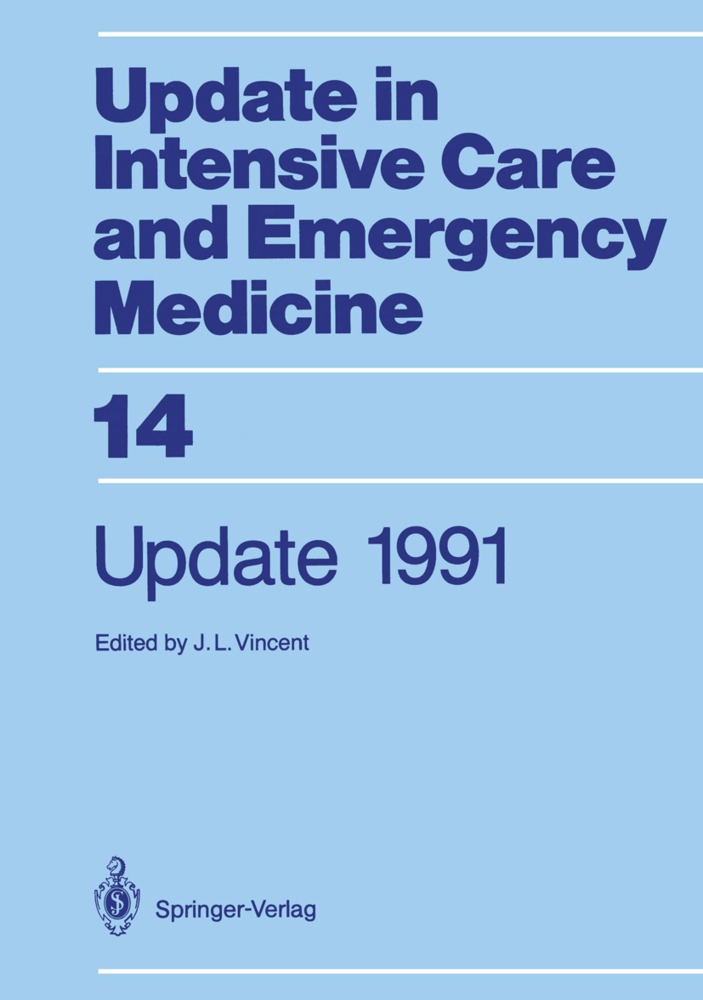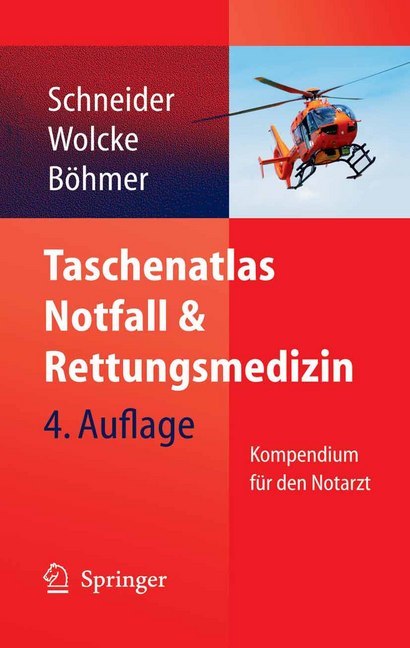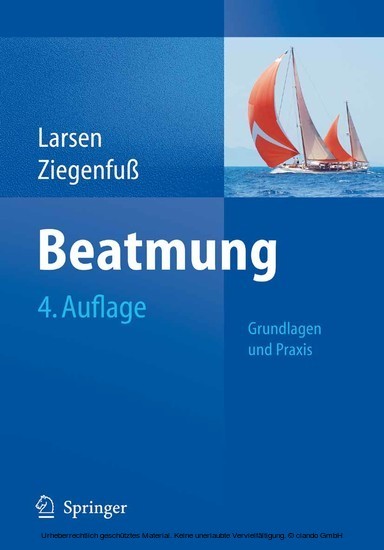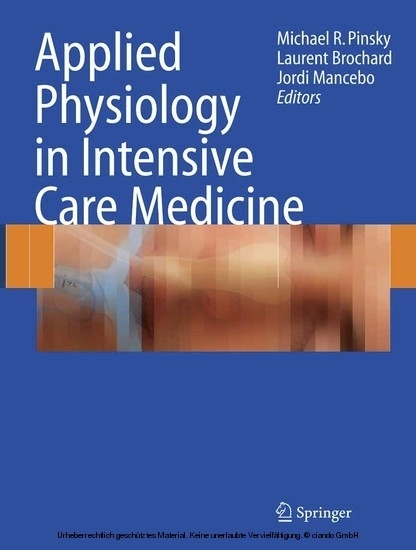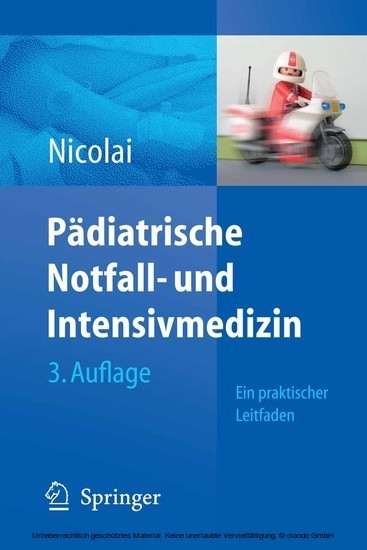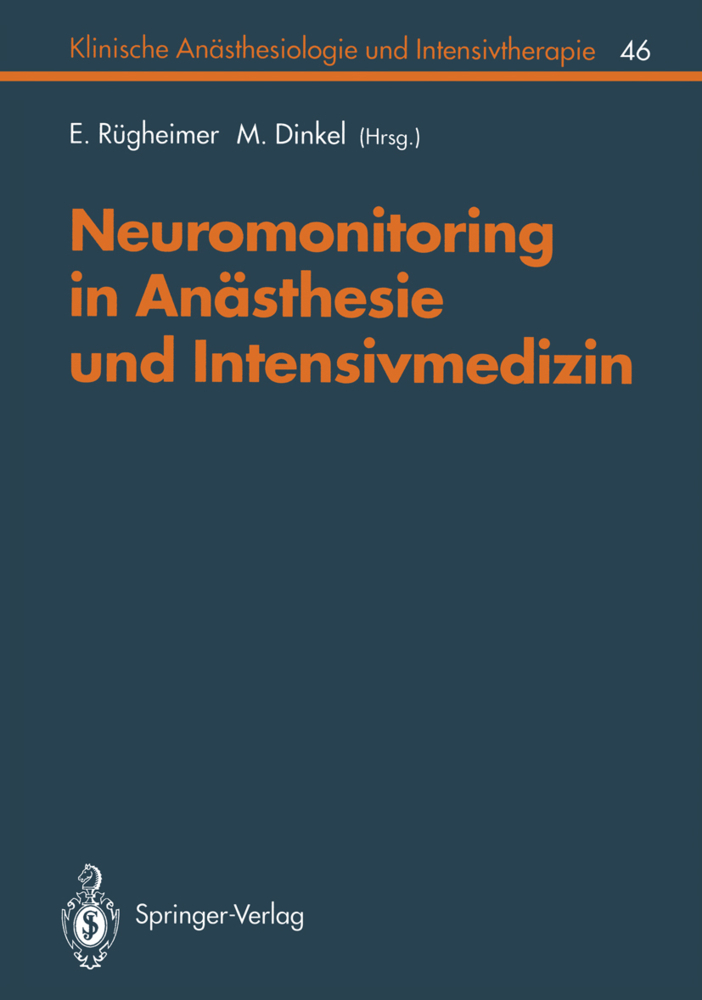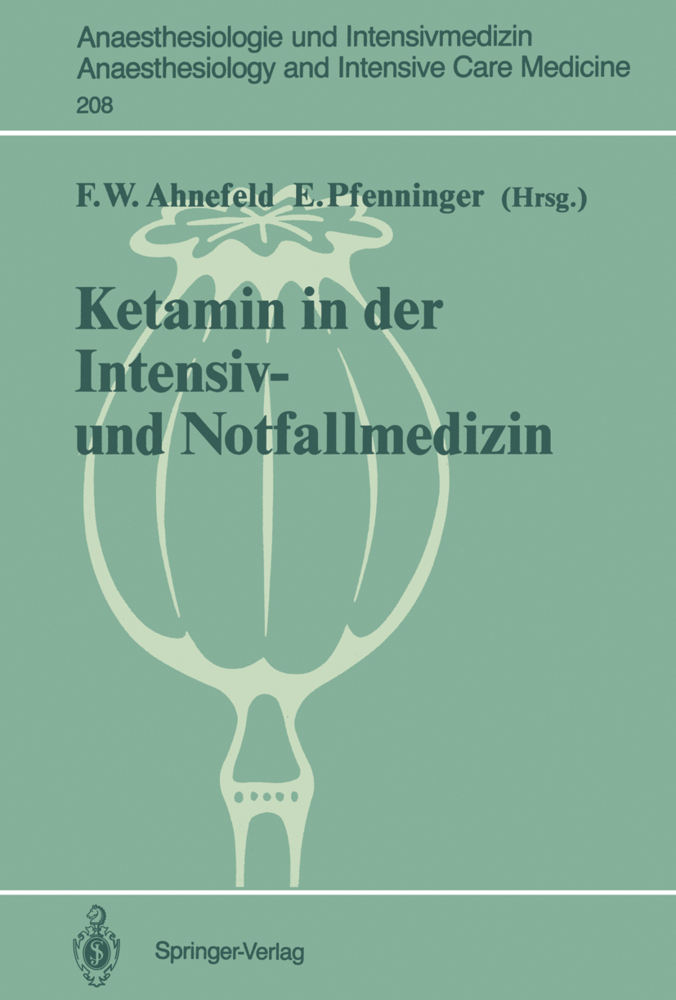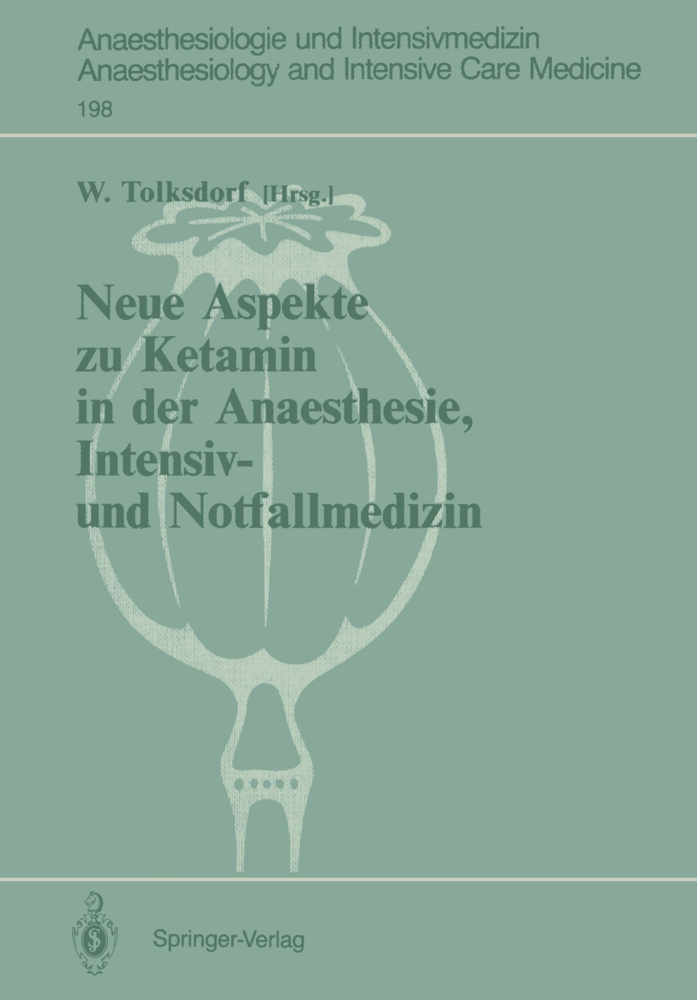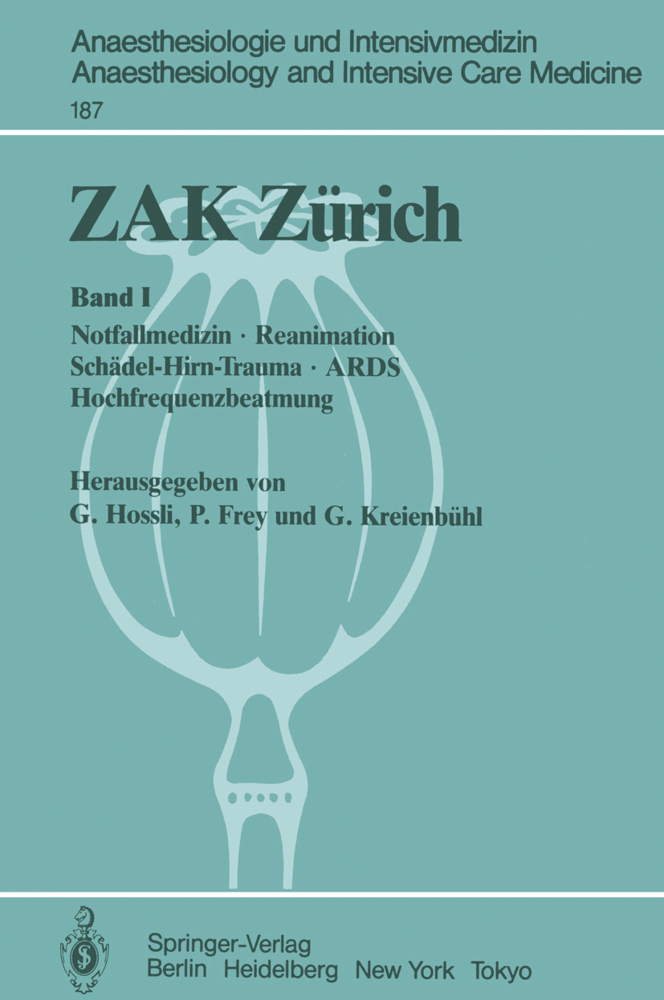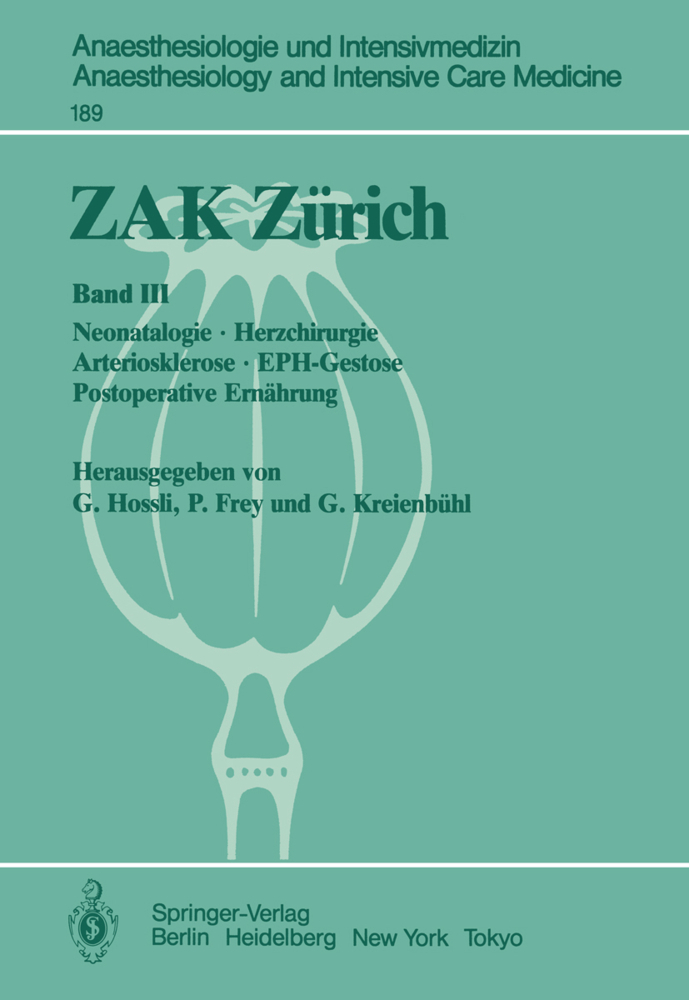Update 1991
Update 1991
A comprehensive survey of recent advances is given in this Update. The wide spectrum of experimental and clinical investigations include the pathophysiologic, diagnostic and therapeutic aspects.
The Resuscitation of Submersion Victims: WET-CPR?
Vasopressor Therapy in Cardiopulmonary Resuscitation
Myocardial Infarction
Bolus Administration of Thrombolytic Agents
Cardioversion and Defibrillation: The Esophageal Approach
Origins, Evolution, and Prognosis of Acute Myocardial Ischemic Syndromes: Focus on Non-Q-Wave Myocardial Infarction
Cardiovascular Support
Effects of Therapy on Regional Blood Flow in Heart Failure
Effects of Dopamine Receptor Agonists on Cardiovascular and Renal Function
Inappropriateness of "Inotropic" Support with Epinephrine
Dobutamine Withdrawal
Oxygen Derived Parameters in Acute Heart Failure
Should Lactic Acidosis Be Corrected?
Circulatory Shock
Oxygen Transport Pattern in Hemorrhagic and Septic Patients
Classification of Shock in the Intensive Care Unit Using Transesophageal Two-Dimensional Echocardiography
Cardiac Alterations in Septic Shock: Pathophysiology, Diagnosis, Prognostic, and Therapeutic Implications
Improvement of Tissue Oxygenation with Enoximone in Septic Shock
Blood Flow and Adrenergic Drugs in Septic Shock
Gastro-intestinal Mucosal Injury in Shock
Optical Spectroscopy for the Measurement of Tissue Hypoxia
Sepsis and ARDS
Oxygen Delivery and Consumption in Adult Respiratory Distress Syndrome and Sepsis
The Respiratory Distress Syndrome in Adults with Gram-negative Sepsis
Bronchoalveolar Lavage (BAL) in Adult Respiratory Distress Syndrome (ARDS)
Mediators of ARDS: A "Magic" Funnel
Is There an Analogy Between Sepsis and Strenuous Physical Exercise in the Process of Neutrophil Activation in Man: A Working Hypothesis?
Interactions Between Cytokinesand Vascular Wall: Effect on the Contractile Function
Modulation of the Cytokine Response in Sepsis
The Orchestra of Mediators in the Pathogenesis of Septic Shock: A Review
Ways to Interfere with Lethal Cytokinemia
Cytokines: Role in Human Metabolism
Clinical Role of Tumor Necrosis Factor in Septic Shock
Tumor Necrosis Factor and the Disbalance Between Coagulant and Anticoagulant Mechanisms in Septicemia
Heart-Lung Interactions
Hemodynamic Variable Analysis During Mechanical Ventilation: Defining the Steady State
Pulsatile Flow Pulmonary Hemodynamics
Acute Left Ventricular Dysfunction During Weaning from Mechanical Ventilation
Vasodilating Therapy in ARDS
Respiratory Failure
Intensive Care Management of Life-Threatening Status Asthmaticus
Assessment of Respiratory Mechanics in ICU Patients
Diagnosis of Respiratory Muscle Dysfunction
Respiratory Workload During Mechanical Ventilation
Alternative Modalities for Ventilatory Support
Severe Infections
Diagnosis of Lung Infection in Intensive Care Unit Patients Using the Protected Specimen Brush Technique
The Protected Minialveolar Lavage Technique for the Diagnosis of Nosocomial Pneumonia
Selective Decontamination in ICU Patients: Benefits and Doubts
Mechanisms of Resistance to ß-Lactam Antibiotics
Ho Do We Select Bacterial Resistance in the ICU?
Intravenous Fluids
Clinical Use of Hydroxyethyl Starches
Small Volume Hypertonic Resuscitation in Uncontrolled Hemorrhage
Small Volume Hypertonic Resuscitation: The Conceptional Basis for Volume Therapy in Septic Shock
Renal Failure
Susceptibility of the Kidney to Hypoxia
Continuous Renal Replacement Therapy
Emergency
Initial Management of Trauma Patients
Emergency Treatment of Multiple Trauma in Children
Use andMisuse of Flumazenil in Clinical Toxicology
Neurologic Crisis
Lung Dysfunction After Head Injury
Cerebral Circulatory Monitoring
Venous Oxygen Saturation in the Jugular Bulb
Cerebral Blood Flow Velocity Using Doppler Techniques
Treatment of Tetanus
Plasma Exchange in the Guillain-Barré Syndrome
Sedation and Paralysis
Sedation in Intensive Care
Using Neuromuscular Blocking Agents in ICU: A Need for More Control?
Current Issues
Evaluation of Iatrogenic Complications in Intensive Care Units
Use of a Probability Model for Predicting ICU Outcome
Enteral Nutrition and Infection: Benefits and Risks
Approach to the Patient with Severe Liver Failure.
Cardiopulmonary Resuscitation
Abdominal Interposed Between Thoracic Compressions During Cardiopulmonary ResuscitationThe Resuscitation of Submersion Victims: WET-CPR?
Vasopressor Therapy in Cardiopulmonary Resuscitation
Myocardial Infarction
Bolus Administration of Thrombolytic Agents
Cardioversion and Defibrillation: The Esophageal Approach
Origins, Evolution, and Prognosis of Acute Myocardial Ischemic Syndromes: Focus on Non-Q-Wave Myocardial Infarction
Cardiovascular Support
Effects of Therapy on Regional Blood Flow in Heart Failure
Effects of Dopamine Receptor Agonists on Cardiovascular and Renal Function
Inappropriateness of "Inotropic" Support with Epinephrine
Dobutamine Withdrawal
Oxygen Derived Parameters in Acute Heart Failure
Should Lactic Acidosis Be Corrected?
Circulatory Shock
Oxygen Transport Pattern in Hemorrhagic and Septic Patients
Classification of Shock in the Intensive Care Unit Using Transesophageal Two-Dimensional Echocardiography
Cardiac Alterations in Septic Shock: Pathophysiology, Diagnosis, Prognostic, and Therapeutic Implications
Improvement of Tissue Oxygenation with Enoximone in Septic Shock
Blood Flow and Adrenergic Drugs in Septic Shock
Gastro-intestinal Mucosal Injury in Shock
Optical Spectroscopy for the Measurement of Tissue Hypoxia
Sepsis and ARDS
Oxygen Delivery and Consumption in Adult Respiratory Distress Syndrome and Sepsis
The Respiratory Distress Syndrome in Adults with Gram-negative Sepsis
Bronchoalveolar Lavage (BAL) in Adult Respiratory Distress Syndrome (ARDS)
Mediators of ARDS: A "Magic" Funnel
Is There an Analogy Between Sepsis and Strenuous Physical Exercise in the Process of Neutrophil Activation in Man: A Working Hypothesis?
Interactions Between Cytokinesand Vascular Wall: Effect on the Contractile Function
Modulation of the Cytokine Response in Sepsis
The Orchestra of Mediators in the Pathogenesis of Septic Shock: A Review
Ways to Interfere with Lethal Cytokinemia
Cytokines: Role in Human Metabolism
Clinical Role of Tumor Necrosis Factor in Septic Shock
Tumor Necrosis Factor and the Disbalance Between Coagulant and Anticoagulant Mechanisms in Septicemia
Heart-Lung Interactions
Hemodynamic Variable Analysis During Mechanical Ventilation: Defining the Steady State
Pulsatile Flow Pulmonary Hemodynamics
Acute Left Ventricular Dysfunction During Weaning from Mechanical Ventilation
Vasodilating Therapy in ARDS
Respiratory Failure
Intensive Care Management of Life-Threatening Status Asthmaticus
Assessment of Respiratory Mechanics in ICU Patients
Diagnosis of Respiratory Muscle Dysfunction
Respiratory Workload During Mechanical Ventilation
Alternative Modalities for Ventilatory Support
Severe Infections
Diagnosis of Lung Infection in Intensive Care Unit Patients Using the Protected Specimen Brush Technique
The Protected Minialveolar Lavage Technique for the Diagnosis of Nosocomial Pneumonia
Selective Decontamination in ICU Patients: Benefits and Doubts
Mechanisms of Resistance to ß-Lactam Antibiotics
Ho Do We Select Bacterial Resistance in the ICU?
Intravenous Fluids
Clinical Use of Hydroxyethyl Starches
Small Volume Hypertonic Resuscitation in Uncontrolled Hemorrhage
Small Volume Hypertonic Resuscitation: The Conceptional Basis for Volume Therapy in Septic Shock
Renal Failure
Susceptibility of the Kidney to Hypoxia
Continuous Renal Replacement Therapy
Emergency
Initial Management of Trauma Patients
Emergency Treatment of Multiple Trauma in Children
Use andMisuse of Flumazenil in Clinical Toxicology
Neurologic Crisis
Lung Dysfunction After Head Injury
Cerebral Circulatory Monitoring
Venous Oxygen Saturation in the Jugular Bulb
Cerebral Blood Flow Velocity Using Doppler Techniques
Treatment of Tetanus
Plasma Exchange in the Guillain-Barré Syndrome
Sedation and Paralysis
Sedation in Intensive Care
Using Neuromuscular Blocking Agents in ICU: A Need for More Control?
Current Issues
Evaluation of Iatrogenic Complications in Intensive Care Units
Use of a Probability Model for Predicting ICU Outcome
Enteral Nutrition and Infection: Benefits and Risks
Approach to the Patient with Severe Liver Failure.
Vincent, Jean L.
| ISBN | 978-3-540-53672-7 |
|---|---|
| Artikelnummer | 9783540536727 |
| Medientyp | Buch |
| Copyrightjahr | 1991 |
| Verlag | Springer, Berlin |
| Umfang | XVII, 597 Seiten |
| Abbildungen | XVII, 597 p. 39 illus. |
| Sprache | Englisch |

